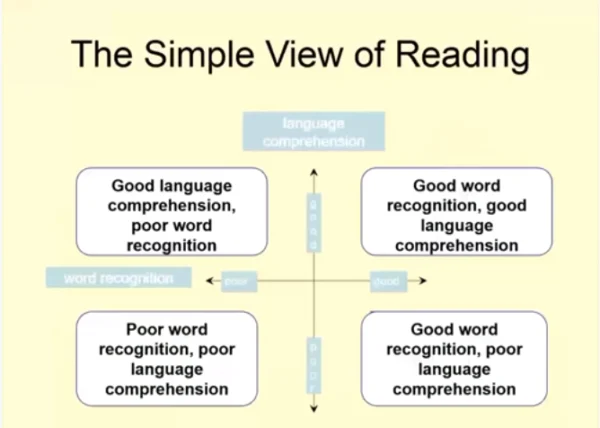English Statement
At St. Lawrence, we promote high standards of language and literacy by equipping pupils with a strong command of the spoken and written word, and by developing a love of literature through widespread reading for pleasure.
We believe that reading and writing are key skills for life. Our writing aim is to provide children with transferrable skills to build on year on year, that can be used throughout each phase of their education and prepare them for secondary school. Teaching children to write for a range of purposes and audiences can be very exciting, especially here at St. Lawrence where we use captivating and exciting texts to drive our writing curriculum.
We believe that talking comes before reading and writing, therefore have developed an oracy curriculum for children. Teachers plan a spoken outcome for the end of at least one unit of work in English, and practice, embed and hone these skills across the curriculum.
Our whole school community is committed to enabling our children become lifelong readers, reading for purpose and pleasure. We recognise the importance of taking a consistent approach to the teaching of phonics and reading and have high expectations of all children, encouraging each child to challenge themselves, persevere and pursue success, and always ‘being the best they can be’.
Teaching Reading
Reading has been described as the product of decoding and comprehension, a model first proposed by Gough and Tunmer in 1986, who called it the Simple View of Reading.

Word Recognition/Phonics
Our reading programme is tightly matched to our phonics teaching. We believe that early reading enables access to the curriculum and the wider curriculum.
In Early Years and KS1 our pupils participate in daily phonics sessions using the Little Wandle validated systematic, synthetic phonics programme. Little Wandle is a popular phonics scheme, updated from Letters and Sounds, and like other schemes it teaches children the sounds in English, the letters that represent them, and how to form the letters when writing. Little Wandle Phonics includes reading books written using only the letters they have learnt at each level (and a small number of separately taught tricky words). The children will quickly and confidently begin to recognise the sounds taught and then be able to blend the sounds for reading.
There are three sets of sounds of learn throughout Reception and KS1. At the end of Y1 children will be assessed on their knowledge of the sounds by a Phonics Screening Check to give an indication of the sounds they are confident recognising.
Emphasis is placed on the application of sounds through reading phonetically decodable texts tightly matched to the phonics programme and encoding for spelling and writing.
What you need to know about phonics

- Phonics is taught daily in Reception and Y1/2 class at a brisk pace.
- Teaching is extended beyond the dedicated time and is applied and reinforced throughout the day in other subjects.
- Progress is assessed and monitored by continuous Assessment for Learning (AfL) strategies and individual assessments.
- Each session includes the essential – Revisit and Review, Teach, Practice, Apply and Assess.
- All teachers and teaching assistants are well trained and have a consistent approach to the teaching of phonics.
- Those children at risk of not retaining or applying sounds will be quickly identified and targeted for additional intervention.
- Decodable texts are matched to the Little Wandle Phonics Programme.
Information for parents can be found via the following link:
For parents | Letters and Sounds (littlewandlelettersandsounds.org.uk)
Fluency is key in learning to read. Fluency is made up of speed, accuracy and prosody, and these three elements go hand in hand. Fluency builds into comprehension, so we ensure that texts are planned and carefully selected to enable children to experience rich language and develop their knowledge of reading matter as well as sequencing learning. We believe in taking opportunities to read- in increasing a child’s learning miles by exposing them to reading right across the curriculum, and involving all members of staff in this.
Writing
Our approach to writing, developed from choosing the best elements of schemes such as Jane Considine, Read to Write and Grammarsourus, empowers teachers to provide high quality teaching of reading and writing sessions through high quality literature texts.
Having a quality text that supports the genre being taught enhances the writing process, whereby explicit teaching links can be made, with children referring to the text. There is clear evidence that children learn to write from what they read so this approach ensures reading and writing are aligned and not separated. Our Vehicle Texts (children’s language-rich books) are carefully chosen to be read aloud, enjoyed and discussed. The books selected are challenging and beautifully written, but also provide important opportunities to teach new vocabulary explicitly. The reading of the text enhances ‘Book talk’ and encourage drama opportunities whilst providing rich and engaging opportunities to write for a genuine purpose to a range of audiences, which can be highly motivating (EEF, 2020).
We are also keen to share our suggested reads for each year group. We hope you enjoy!
Recommended-reading-list Reception
Recommended-books-for-year-1
Recommended-books-for-year-2
Recommended-books-for-year-3
Recommended-books-for-year-4
Recommended-books-for-year-5
Recommended-books-for-year-6